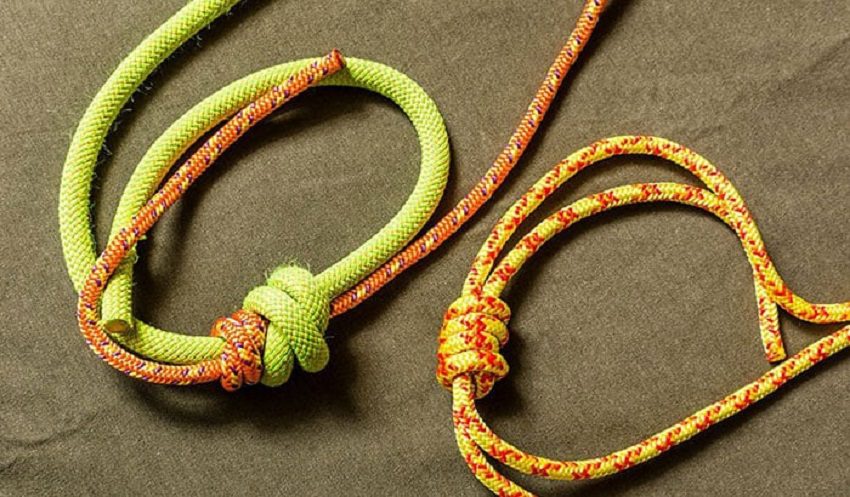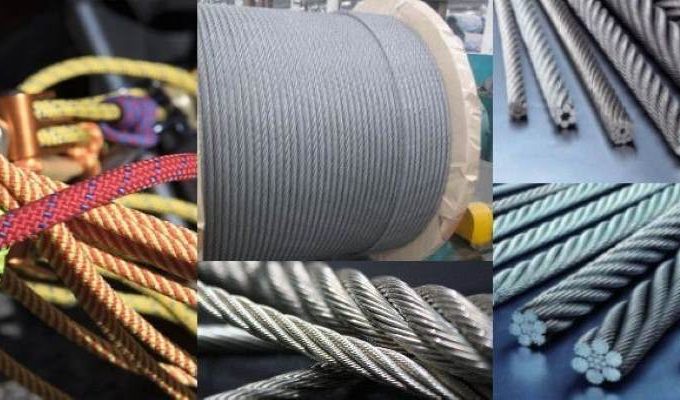
Static Rope Vs Dynamic Rope: Unleashing the Ultimate Gear Showdown
Static ropes and dynamic ropes are two types of climbing ropes used in different scenarios. Static ropes have minimal stretch and are suitable for scenarios where load-bearing stability is essential, such as hauling heavy loads.
Contents at a Glance
ToggleOn the other hand, dynamic ropes have more elasticity and are designed to absorb energy in case of a fall, making them ideal for climbing and mountaineering activities where falls are common.
Unraveling Static Rope Vs Dynamic Rope
When it comes to climbing and rappelling, the selection of the right rope is crucial. The choice between static and dynamic ropes can have a significant impact on your safety, performance, and overall experience. In this article, we will unravel the differences between static rope and dynamic rope, and understand the importance of rope selection in climbing and rappelling.
Importance Of Rope Selection In Climbing And Rappelling
In the world of climbing and rappelling, the rope is your lifeline, literally. It is the primary means of protection against falls and plays a vital role in the safety of the climber. Choosing the right rope for the task at hand is critical to ensure a successful and safe climb or rappel.
The rope you select should possess specific characteristics that are suitable for the type of climbing or rappelling you plan to do. Factors such as strength, elongation, weight, and handling properties are all important considerations. Whether you are climbing a towering rock face or rappelling down a steep cliff, the rope you use can determine the outcome of your adventure.
Fundamental Differences Between Static And Dynamic Ropes
Static rope and dynamic rope are two main types of ropes used in climbing and rappelling, each with its unique characteristics and purposes. Understanding the differences between these ropes is essential to make an informed choice that aligns with your specific needs.
| Static Rope | Dynamic Rope |
|---|---|
| Designed to stretch very little or not at all under load, providing minimal shock absorption. | Designed to stretch significantly under load, absorbing impact forces and reducing stress on the climber’s body and anchors. |
| Not suitable for lead climbing and falls, where the risk of injury is higher due to lack of stretching ability. | Recommended for lead climbing and falls, as the elastic properties of the rope help reduce the impact force and minimize the risk of injury. |
| Provides better durability and resistance to abrasion, making it suitable for situations where the rope may be exposed to rough surfaces. | Offers less durability and may be prone to wear when dragged across sharp edges and rugged terrain. |
| Typically used for rappelling, fixed lines, and scenarios that involve minimal vertical movement. | Ideal for sport climbing, trad climbing, ice climbing, and any situation where falls are expected. |
By considering these fundamental differences, you can make an informed decision about which type of rope is best suited for your climbing or rappelling needs. Remember, the choice of rope can greatly impact your safety, so it’s essential to choose wisely and prioritize your well-being.
Core Traits Of Static Rope
Static rope is a specialized type of rope that possesses unique characteristics that make it suitable for various outdoor activities. Understanding the core traits of static rope is essential for making informed decisions when it comes to selecting the right rope for your specific needs.
Inherent Low Elasticity And Its Implications
One of the defining traits of static rope is its low elasticity, also known as minimal stretch. Unlike dynamic ropes that provide elasticity for absorbing and cushioning falls, static ropes maintain their structural integrity without significant elongation. This low elasticity is a direct result of the materials used and the rope’s construction.
The implications of low elasticity are significant. With minimal stretch, static ropes are less likely to absorb impact forces generated during falls, which can be advantageous in certain scenarios such as rappelling or hauling heavy loads. This characteristic allows for precise control, ensuring a secure and stable anchor point during these activities.
Moreover, the low elasticity of static rope reduces the energy exerted on the climber’s body during a fall. This means that falls on static ropes can be more jarring compared to falls on dynamic ropes. However, this must be balanced with the increased safety provided by the higher strength and toughness of static ropes, which can mitigate potential risks.
Ideal Use-cases For Static Ropes In Outdoor Activities
Static ropes find their ideal use cases in various outdoor activities that require stability, durability, and reliable performance. Here are some of the common scenarios where static ropes excel:
- Rappelling: Static ropes are the preferred choice for rappelling due to their low stretch and increased control. The minimal elongation allows for precise descent, enabling climbers to maintain stability and carefully navigate steep or vertical terrain.
- Rescue operations: During rescue missions, static ropes play a crucial role. Their low elasticity enables smooth and controlled movement while carrying out complex and high-stress maneuvers. Whether it be swift-water rescues, high-angle rescues, or any other rescue operation, static ropes provide the necessary strength and dependability.
- Industrial applications: Static ropes are extensively used in industrial settings such as construction, rigging, or working at heights. These ropes offer exceptional strength, reliability, and resistance to abrasion, making them suitable for heavy lifting, equipment hauling, and securing objects.
It is important to note that while static ropes deliver remarkable performance in the aforementioned activities, they are not designed for absorbing falls or high-impact forces. Therefore, they are not recommended for lead climbing, where dynamic ropes are the more appropriate choice.
Dynamics Of A Dynamic Rope
When it comes to climbing ropes, there are two main types that climbers rely on: static ropes and dynamic ropes. Each has its own unique characteristics and is suited for different purposes. In this blog post, we will focus on the dynamics of a dynamic rope, exploring its high stretch factor and energy absorption capacity, as well as the situations where dynamic ropes are the climber’s choice.
High Stretch Factor
A dynamic rope is specifically designed to have a high stretch factor, meaning it can elongate significantly under load. This elasticity makes it ideal for absorbing the impact of falls. In contrast, static ropes have minimal stretch, providing little to no give when subjected to weight or force.
The high stretch factor of a dynamic rope can be attributed to its construction. Typically, dynamic ropes are made by twisting continuous strands of nylon or polyester fibers together. This construction allows the rope to stretch by as much as 30% or more under stress, effectively reducing the impact forces on the climber and the anchors.
During a fall, the high stretch factor of a dynamic rope distributes the force across a larger surface area, preventing the sudden jolt that could otherwise lead to injury. It acts as a shock absorber, reducing the strain on both the climber and the climbing system.
Energy Absorption Capacity
Another crucial aspect of dynamic ropes is their energy absorption capacity. Due to their high stretch factor, dynamic ropes can absorb a significant amount of energy during a fall. This absorbed energy is dissipated throughout the rope, reducing the impact force that reaches the climber and the anchors.
Dynamic ropes achieve their remarkable energy absorption capacity through a combination of elasticity and the inherent properties of the material. The stretching of the rope disperses the force over time, allowing the rope to gradually return to its original length once the force subsides. This controlled dissipation of energy greatly enhances the safety and overall experience of the climber.
Situations Where Dynamic Ropes Are The Climber’s Choice
Dynamic ropes are the preferred choice in various climbing scenarios. Their high stretch factor and energy absorption capacity make them ideal for activities that involve frequent falls or dynamic movements, such as sports climbing, ice climbing, and mountaineering on mixed terrain.
In sport climbing, where climbers often push their limits and take falls, dynamic ropes are essential. The rope’s ability to absorb and distribute the energy of a fall helps prevent injury and minimizes the impact on anchors and the climber’s gear.
Similarly, in ice climbing and mountaineering on mixed terrain, where falls onto icy surfaces or uneven terrain can be unpredictable, dynamic ropes offer vital protection. The rope’s elasticity allows it to adapt to the environment, reducing the risk of injury and providing confidence to climbers.

Credit: twitter.com
Static Rope Vs Dynamic Rope: Safety First
When it comes to climbing and other high-risk activities, safety is the top priority. It is vital to choose the right type of rope to ensure maximum safety during falls and rescues. In this article, we will delve into the comparison between static ropes and dynamic ropes in terms of safety and understand the importance of fall factors and impact forces.
Comparison In Terms Of Safety During Falls And Rescues
Fall Factors
Understanding fall factors is crucial to comprehend the difference between static ropes and dynamic ropes in terms of safety. The fall factor refers to the ratio between the length of a fall and the amount of rope available to absorb the impact.
In the case of a static rope, which has minimal elasticity, a fall with a high fall factor can lead to substantial impact forces. Since a static rope does not stretch much, it is not designed to absorb the energy generated during a fall. Consequently, it can result in an abrupt stop that exerts tremendous force on both the climber and the anchor points.
On the other hand, dynamic ropes are constructed with a certain degree of stretch. This elasticity allows a dynamic rope to absorb the energy of a fall more effectively, significantly reducing the impact forces and preventing potential injuries. The elasticity of a dynamic rope provides a gentler catch and minimizes the strain on both the climber and the anchor points, enhancing safety during falls.
Impact Forces
Impact force is another crucial aspect to consider when comparing the safety of static ropes and dynamic ropes. It’s refers to the amount of force exerted on the climber and anchor points during a fall.
A static rope, due to its limited elasticity, generates higher impact forces. When a climber falls on a static rope, the sudden stop creates a rapid deceleration, resulting in an intense shock load on the system. These higher impact forces increase the risk of injury and put additional strain on the climber’s gear and anchor points.
On the contrary, dynamic ropes excel in minimizing impact forces. The stretch and dynamic properties of these ropes allow them to absorb energy gradually during a fall, hence reducing the shock load on the system. By spreading out the force of impact, dynamic ropes provide a safer climbing experience, ensuring the well-being of climbers and protecting the integrity of anchor points.
It is important to note that while dynamic ropes offer superior safety in terms of falls and rescues, they may not be as suitable for certain applications that require minimal stretch, such as rope access work or hauling heavy loads. In these situations, a static rope may be more appropriate, prioritizing stability and control over impact forces.
By understanding the distinctions in safety between static ropes and dynamic ropes in terms of falls and rescues, climbers and adventurers can make informed decisions when selecting the most suitable rope for their specific needs. Remember, putting safety first is paramount in any high-risk activity.
Gear Showdown: Maintenance And Durability
One of the crucial aspects to consider when selecting your climbing rope is the level of maintenance and durability it offers. Static ropes and dynamic ropes differ in their make and functionality, which in turn affects their care requirements and lifespan. In this gear showdown, we will explore the care, maintenance, and lifespan of static and dynamic ropes, helping you make an informed decision based on long-term use.
Care, Maintenance, And Lifespan Of Static And Dynamic Ropes
Static Ropes
Static ropes are designed with a focus on strength and durability. As the name suggests, they have minimal stretch, ensuring stability when ascending or descending. This lack of stretch, however, demands stricter care and maintenance procedures to extend their lifespan.
Care:
- Inspect your static rope before and after each use to identify any signs of wear and tear.
- Avoid exposing your static rope to harsh chemicals, direct sunlight, extreme temperatures, or abrasive surfaces.
- Store your static rope in a cool, dry place away from moisture and humidity.
Maintenance:
- Regularly clean your static rope using mild soap and warm water to remove dirt and debris.
- Remove any knots or tangles carefully, taking extra precautions so as not to cause further damage to the rope fibers.
- Consider using rope protectors or edge guards when climbing in environments with sharp edges or rough surfaces.
Lifespan:
The average lifespan of a static rope can vary depending on the frequency of use, intensity of climbs, and proper care and maintenance. On average, a well-maintained static rope can last anywhere from 5 to 10 years before needing replacement.
Dynamic Ropes
Dynamic ropes, on the other hand, are engineered to absorb the impact of falls, offering a higher level of safety and reducing the force exerted on the climber. While they provide more stretch and cushioning, dynamic ropes still require regular care and maintenance to ensure optimal performance and longevity.
Care:
- Inspect your dynamic rope before and after each use, paying attention to frayed areas or worn sections.
- Avoid exposure to chemicals, direct sunlight, extreme temperatures, and moisture.
- Store your dynamic rope in a cool, dry place away from direct sunlight or humidity.
Maintenance:
- Regularly clean your dynamic rope using mild soap and warm water, gently scrubbing to remove dirt and sweat.
- Inspect for any cuts, abrasions, or soft spots that may compromise the integrity of the rope.
- Retire your dynamic rope if it sustains a significant fall or experiences visible damage beyond repair.
Lifespan:
The lifespan of a dynamic rope can vary depending on factors such as frequency of use, type of climbing, and proper care. On average, a well-maintained dynamic rope can last between 3 to 5 years, but it is important to monitor its condition regularly and replace it as needed.
Frequently Asked Questions On Static Rope Vs Dynamic Rope
What Is The Difference Between A Static Rope And A Dynamic Rope?
Static ropes are designed for hauling and rescuing, while dynamic ropes are better for climbing and absorbing falls. Static ropes have low elasticity, making them suitable for tension and fixed lines. Dynamic ropes, on the other hand,
stretch and absorb energy to mitigate the impact of a fall.
Which Type Of Rope Is Better For Climbing?
For climbing purposes, a dynamic rope is highly recommended due to its ability to stretch and absorb the energy from a fall. This quality helps reduce the impact on the climber’s body and provides a safer climbing experience.
Are Static Ropes Suitable For Any Activities Besides Climbing?
Yes, static ropes are widely used for activities such as caving, industrial applications, rescue operations, and hauling heavy loads. Their minimal stretch and high strength make them ideal for situations where stability and control are essential. However, it’s important to note that static ropes are not suitable for absorbing falls like dynamic ropes are.
Can Dynamic Ropes Be Used For Activities Other Than Climbing?
Although dynamic ropes are primarily used for climbing, their elasticity and shock-absorbing capabilities make them suitable for other activities such as mountaineering and canyoning. However, it’s important to choose a rope designed for the specific activity and ensure it meets the necessary safety standards.
Conclusion
Both static and dynamic ropes serve different purposes in the world of rock climbing. Static ropes offer strength and durability, making them ideal for a variety of static activities. On the other hand, dynamic ropes excel in absorbing shock and providing a higher level of safety during falls.
Ultimately, the choice between static and dynamic ropes depends on the specific needs and preferences of the climber. So, when it comes to selecting the right rope, it’s crucial to consider the type of climbing activity and the safety requirements involved.





